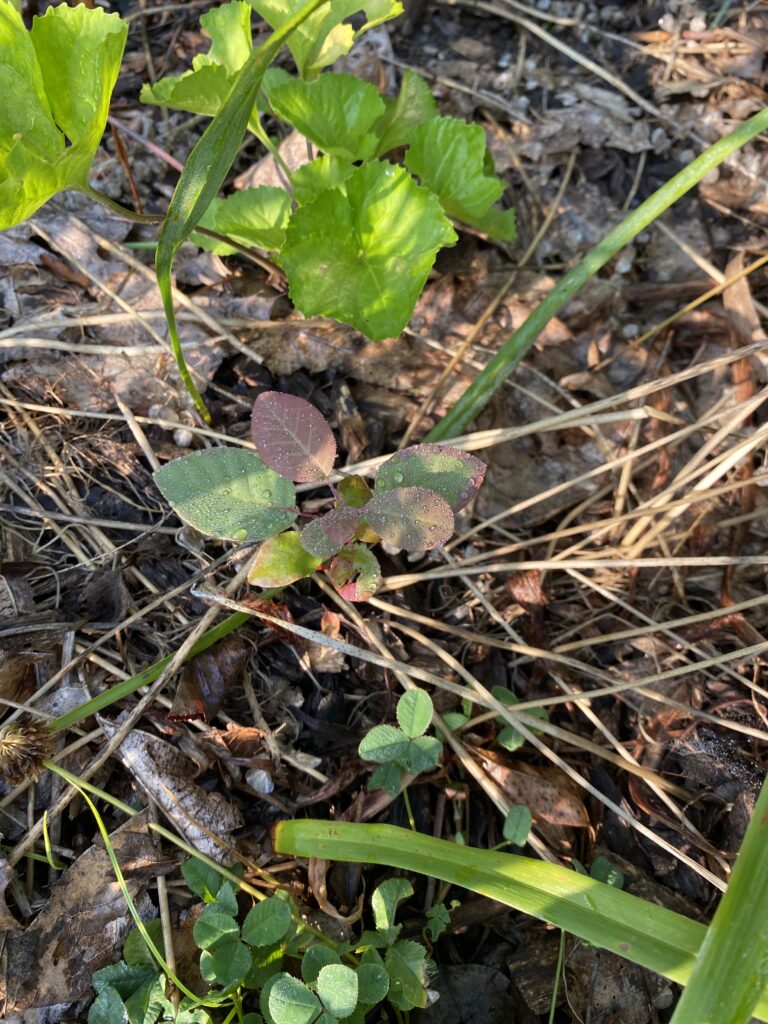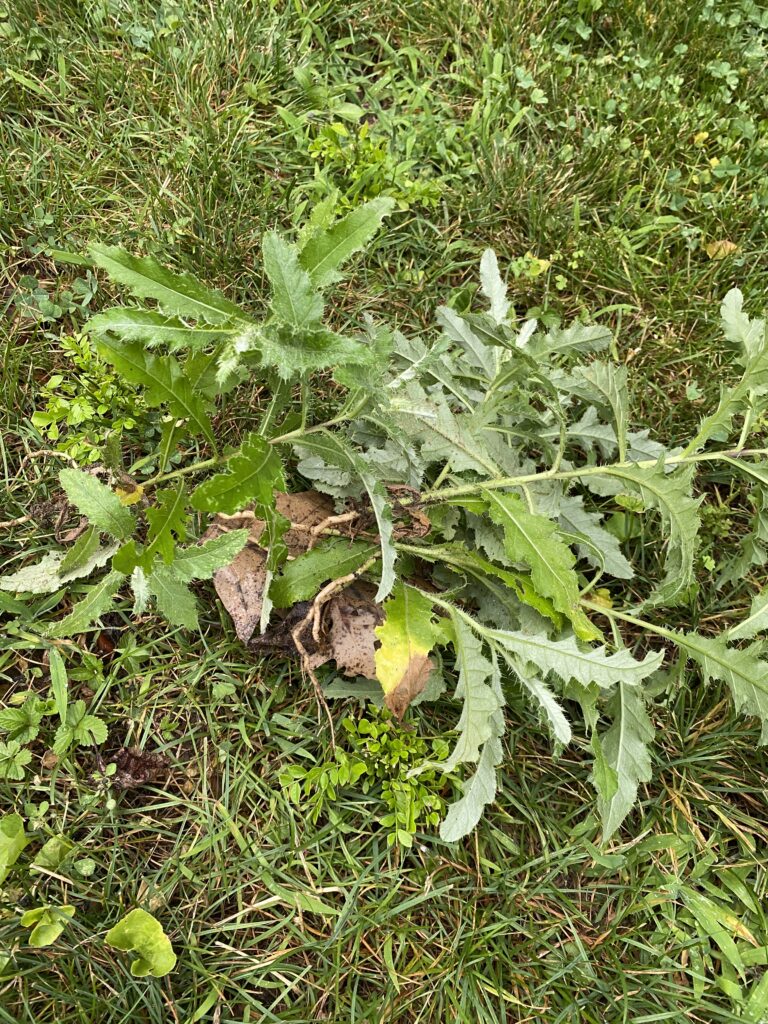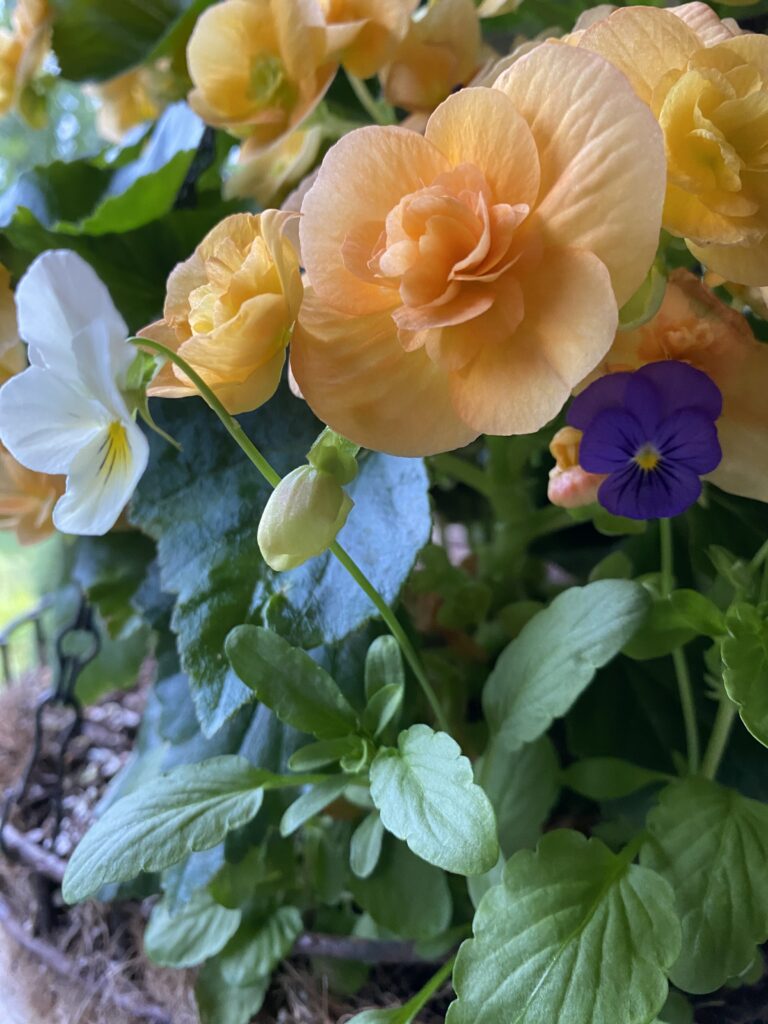
In every garden, there are good seedlings and there are bad seedlings.
Do you know how to determine if a seedling is good or bad?
Let me help you figure it out by about some example seedlings in this first picture.
Right there in the center is a seedling for a smokebush, Cotinus coggygria. Now you might see that and say to yourself, “How wonderful! Mother Nature has provided me with another smokebush. Where shall I plant it?”
And you would be wrong in saying that. Instead you should be slightly horrified that your smokebush has produced at least one seedling and you should then proceed to yank it out and stomp on it. Then look around for others to pull and stomp. And then make plans to remove future seed heads from your smokebush to prevent this from ever happening again. Bad seedling!
At the top of that picture is a violet seedling.
The correct response for any violet seedling is “Oh, how nice! I love violets!” And then, because where there is one violet seedling there are probably many, you can decide to leave it or pull it out. It all depends on your garden and whether or not that particular one is just the common ol’ violet or is one of those special ones you are trying to get growing, such as ‘Freckles’ or the yellow one or the light blue one.
At the bottom of the picture is clover. Like the violet, seeing a clover seedling somewhere isn’t automatically bad or automatically good. Clover has its place in a garden—after all it is a nitrogen-fixing legume— and that place is usually in the lawn, so you could pull this out and not offend your garden. Or leave it because bees do love the flowers.
Now, let us look at this next picture and together I think we’ll agree “bad seedling.”

It’s thistle. Always bad and by the way, I am convinced that the first thistle to show up in a garden is a seedling but after that, all the thistles that come up are offshoots from the roots of that original thistle seedling.
I can stand in my garden and using my x-ray gardener’s vision “see” the network of thistle roots running all through some garden beds. It’s extensive. I can also imagine that beneath the surface there is a central command station run by horrible grass-root-eating grubs who monitor the “thistle root network” (TRN). Whenever I pull out one thistle stem, the grubs get an alert and dispatch resources to that area so that two more thistle shoots can immediately grow for each one I pulled. I’m still looking for where the central command station is so I can destroy it and be rid of thistle once-and-for-all.
It is a lifelong quest and dream.
The other network I see is the root system of my honeylocust tree which runs throughout my entire backyard, based on where its root suckers pop up (everywhere). Between those suckers, and redbud seedlings, occasional oak tree seedlings, horrible mulberry, flowering pear, and cottonwood tree seedlings, plus root suckers from my pawpaws, my garden really does want to be a woods again someday.
But I don’t want it to be a woods again someday, so I consider those all bad seedlings/root suckers. I pull them out out or cut them off as fast as I can, though they often can, and do, grow faster than I can keep up with.
One last seedling to discuss…
I think everyone agrees that viola seedlings that pop up in containers or in the ground after you pull out your spring planting of violas are always good seedlings.

I repeat for emphasis—always good. It’s not even up for debate. Good seedlings. Just look at those charming little flowers making a go of it with that begonia!
Good seedlings.
Anyway, I hope this was a helpful discussion of good seedlings and bad seedlings and their diffrences. As you look out over your garden for seedlings, remember there will always be both good seedlings and bad seedlings. It’s up to us as gardeners to determine on a case by case basis which is which and remove them accordingly.
Again, the only one not up for debate…
Viola seedlings.
Always good seedlings.


The Laundry Love book is great!
Isn’t it? (For those wondering, it’s mentioned on this post